Northern pike are among the tastiest fish that swim in fresh water, but many anglers will never get to enjoy a plate full of pike because they’ve heard the fish is difficult to clean. The “Y” bone is the reason we don’t read more about pike cuisine, but it shouldn’t prevent you from enjoying this delicious fish.
Cleaning a pike is easier than you think. Creating boneless pike fillets results in a perfect fish fry, but the firm, cream-colored flesh is awesome baked, grilled, stir fried, broiled, boiled or simmered in mouth-watering chowder. When cleaned correctly, you’ll get three boneless fillets from each pike.
Key to good table fare is to take care of the catch. Small pike are far and away better eating than the big ones. The general rule of thumb is to keep a couple pike in the 20- to 25-inch range and to immediately release the bigger girls so they can spread those beneficial genes around. Small ones fit better in the livewell, and they stay alive in there better, too. When surface temperatures are over 65°F, have ice along to throw in the livewell. Harvesting pike for the table is best accomplished in cooler waters, from early fall through late spring.
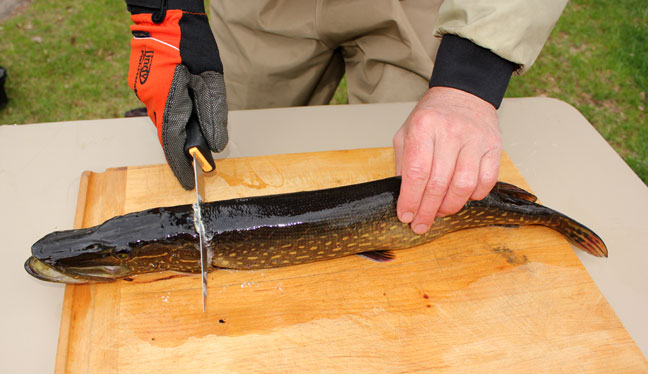
Keeping pike alive and dispatching with a “billy” just before cleaning results in a better end product. Select a fillet knife with a blade at least 6-inches long. Begin cleaning by laying the pike on its belly. Place the fillet knife against the back of the head, just behind the gills, and cut straight down to the backbone. Angle the blade of the knife slightly toward the tail — riding right along the backbone — and slice all the way to the tail and remove the top fillet. Place the blade between the skin and flesh, angled down slightly against the skin. Grab the tab of skin behind the blade with a plier or Lindy Fish Handler Glove and pull slightly while sliding the blade along the skin, removing the first boneless fillet.
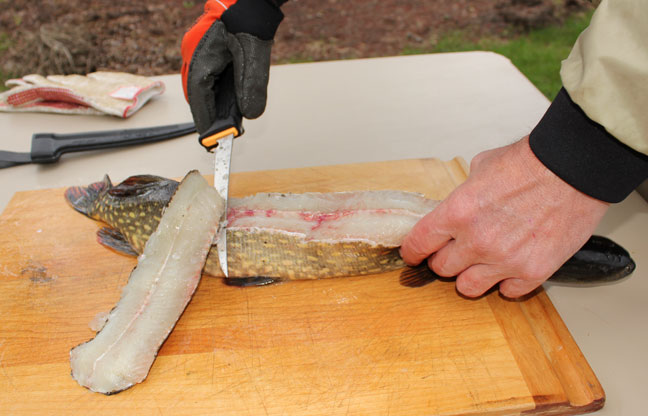
With the pike still on its belly, run a finger along the flat surface where the first fillet was removed. You’re feeling for the tips of the Y bones, which protrude straight up from the ribs toward the back. Lay the blade along the outside edge (away from the spine) of the tips of those bones and cut down until meeting resistance. The resistance comes when your knife hits the area where the Y bones bend out slightly. Turn the blade slightly outward and follow the Y bones out, then go straight down and through the skin on the bottom of the fish.
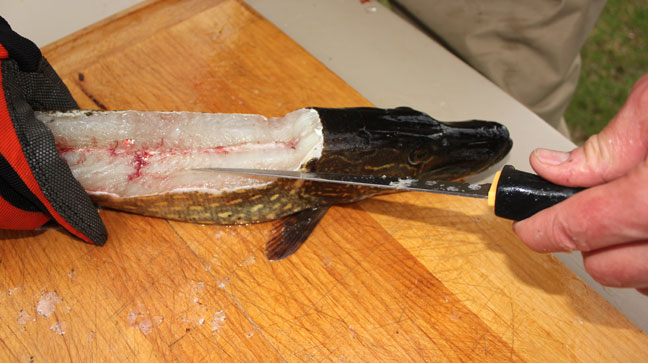
Cut through the skin from head to tail, lay the fillet flat and remove it from the skin. Feel the outer surface of the fillet for any bones that were missed and remove them by gripping with a plier and slowly pulling them out.
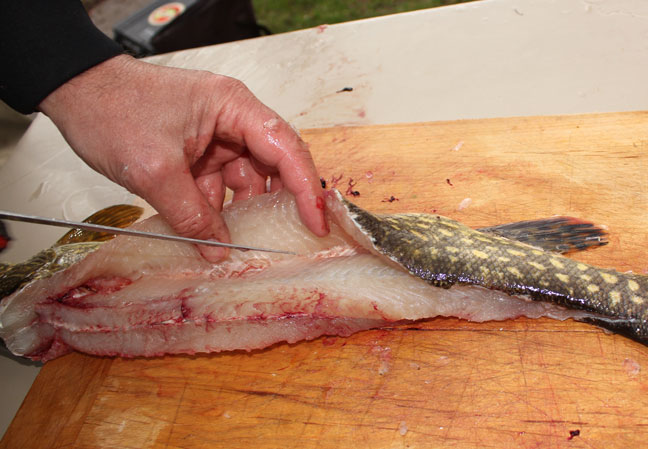
With larger pike in the 25- to 28-inch range, Y bones can be found with the fingertips and pulled out that way — individually with pliers. But, smaller pike tend to have firmer flesh and better flavor. Anything over 30 inches, while still tasty, is noticeably inferior for a lot of recipes, especially pickling. Way up North, people crave pickled pike. To make it, the fillets are cubed (which is another good way of ensuring all the bones are removed). Cubing the fillet into little 1-inch blocks is perfect for stir-frying, soups and chowders, as well as a variety of baked dishes and casseroles.
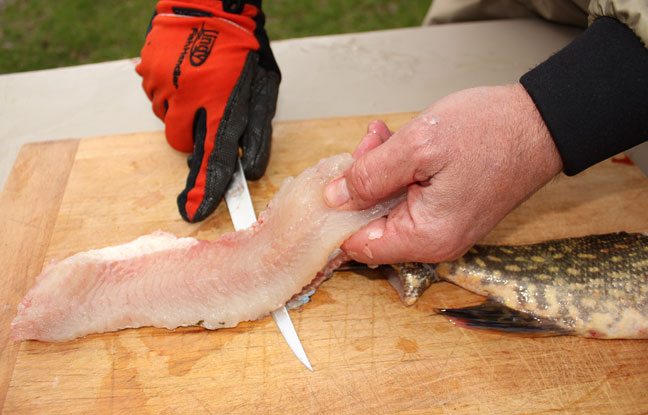
Fresh pike should be eaten within 48 hours. If you plan on freezing the fillets, use a vacuum sealer to ensure the fish stays fresh longer. Another good way to keep air off the fillets is to place them in a zipper-style freezer bag, cover with a few tablespoons of water, fold the top of the bag over and press evenly until all the air is out. When water starts to come out, seal the bag tight and lay it flat in the freezer.
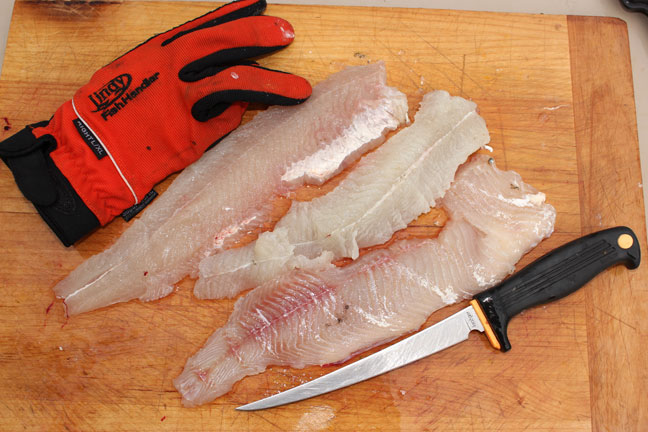
Pike are top-of-the-line predators, and they play an important role in keeping panfish and forage fish populations under control (another good reason for releasing the big girls quickly). Smaller pike are fun to target in colder water with suspending baits like the Smithwick Rogue on a light steel leader, and they are so plentiful in some lakes that fisheries departments expand the limit.
Back home, there’s more than one way to skin that pike, but the three-fillet method is the best one for enjoying a delicious, bone-free, culinary experience with esox lucious — the water wolf.
Featured photo: iStock






